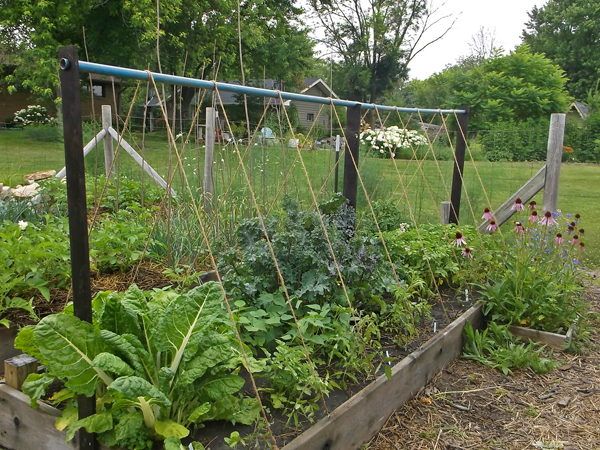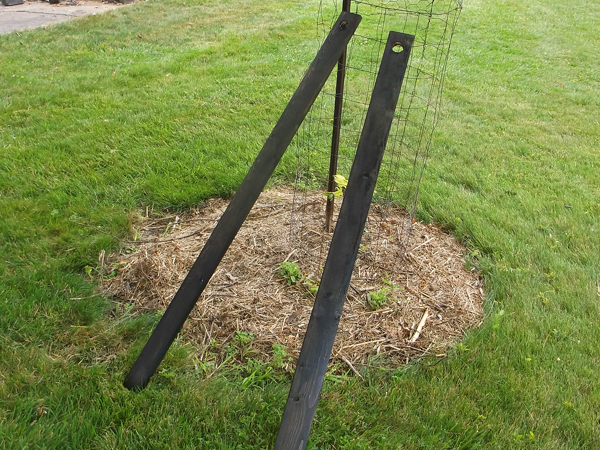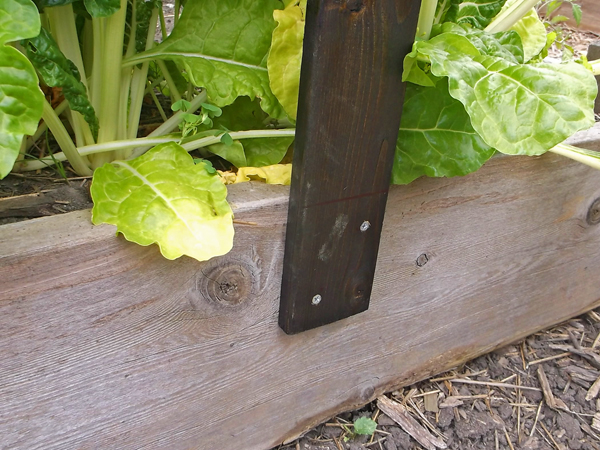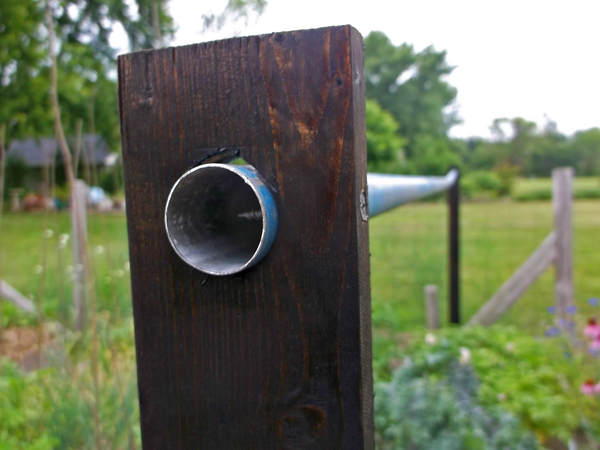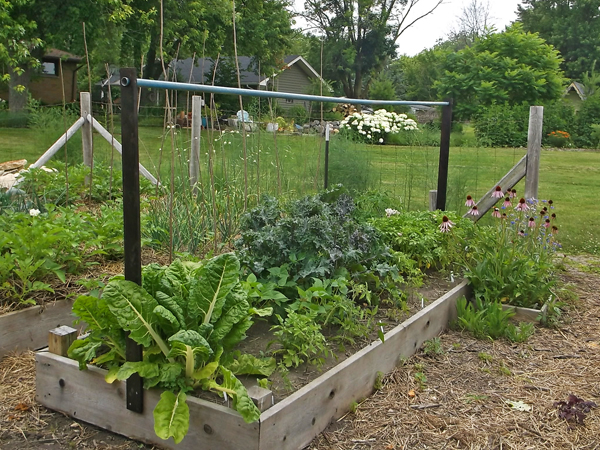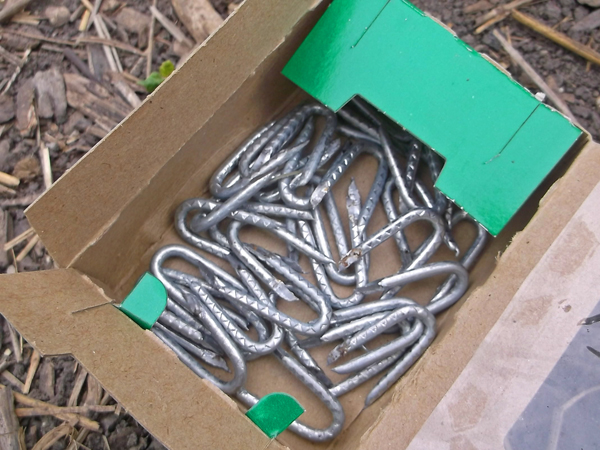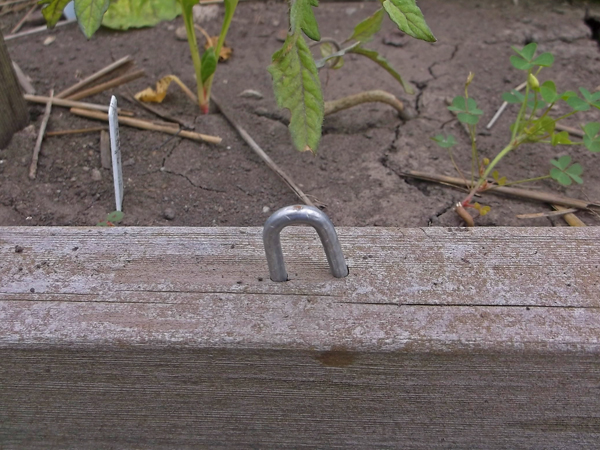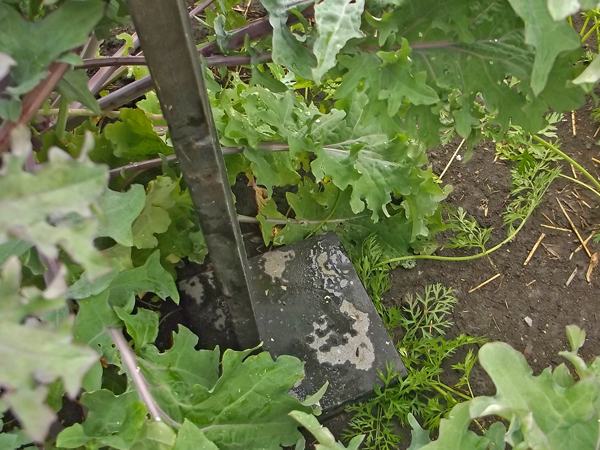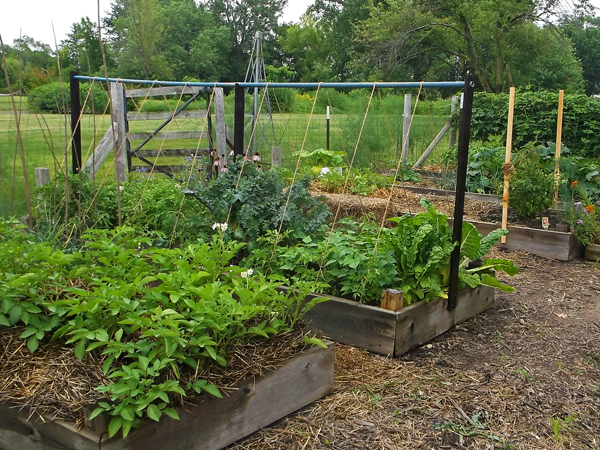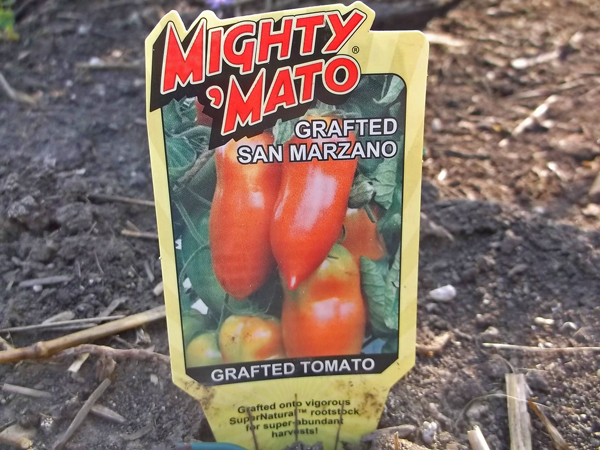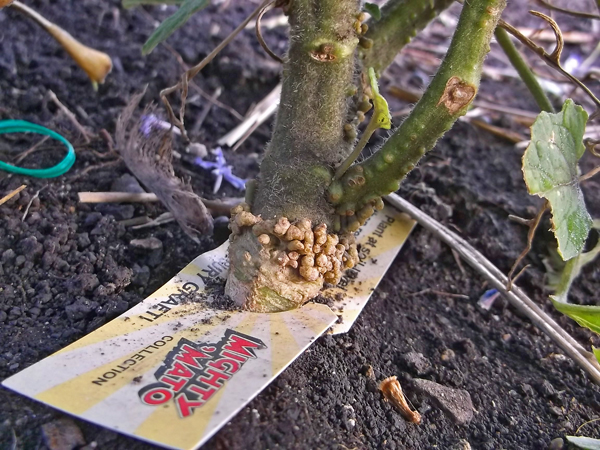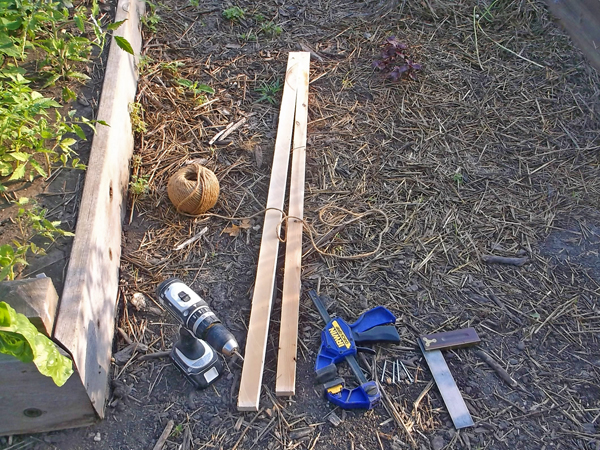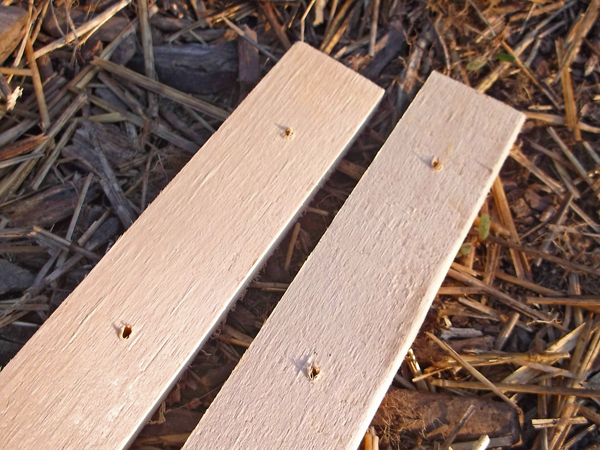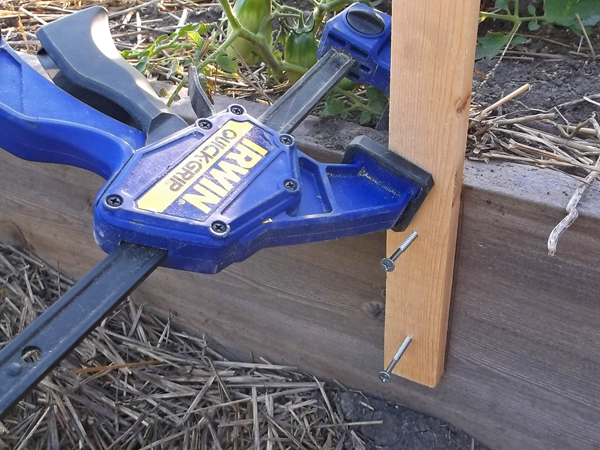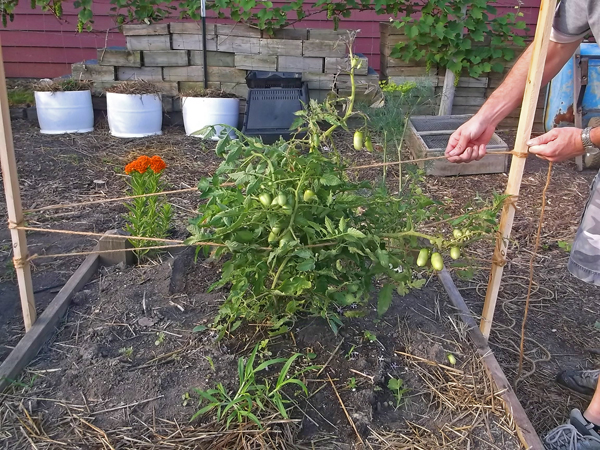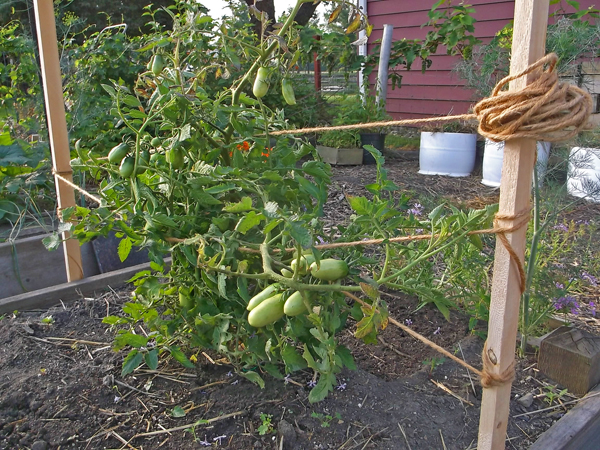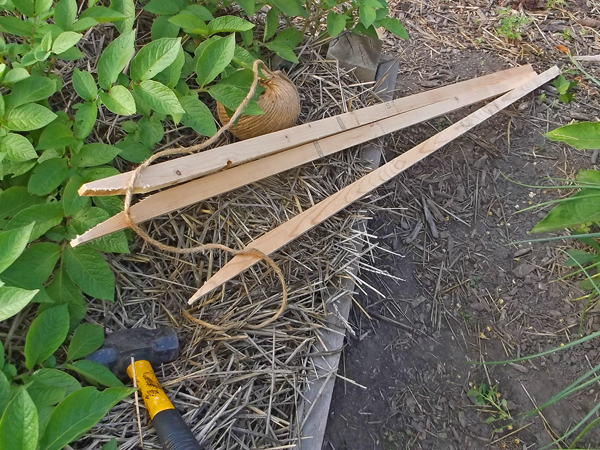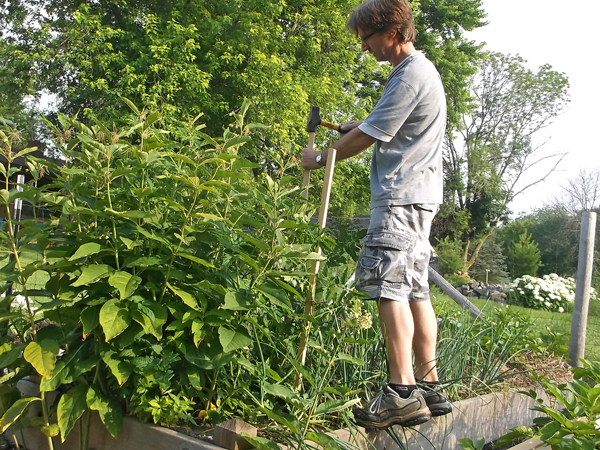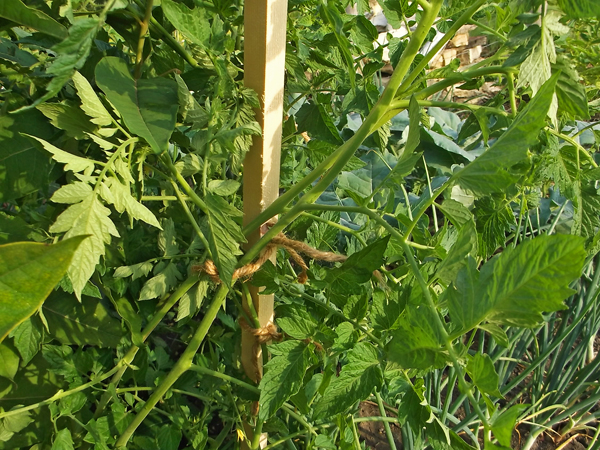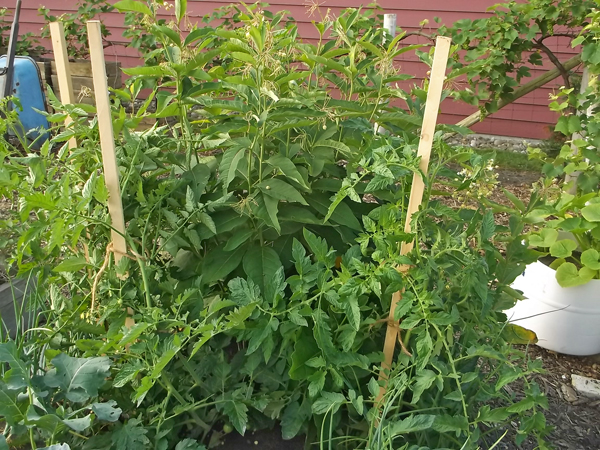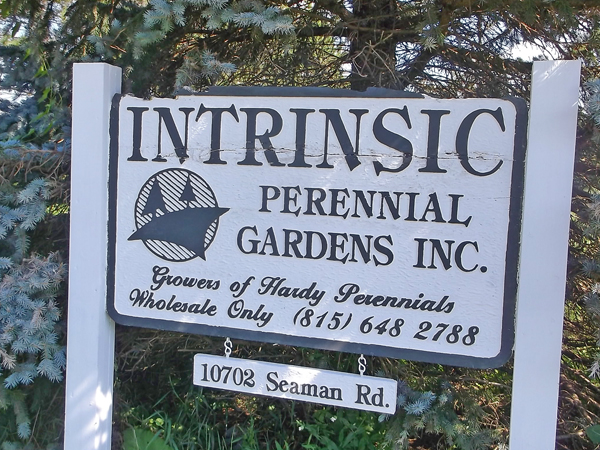
In late winter, weary eyes look to the trees to see if any green is showing. The first sign of growth is a welcome indicator that winter is past and the growing season is upon us. The cycle renewed. Life is good. By mid-July, however, many gardeners are at wits end. It’s either been too hot, too wet, or lately, too dry. Plants are suffering, hoses aren’t long enough, and time is at a premium. Leave town for a week’s vacation? Forget about it. Raise the white flag. Or maybe not. A mid-July visit to Intrinsic Perennial Gardens, Inc, a wholesale perennial nursery in northern Illinois, tells a different tale. Most of the perennials grown there would be unfamiliar to our grandmothers, and many of the old varieties have been improved for better garden performance. Also, thanks to designers/nurserymen such as Brent Horvath, Roy Diblik and Piet Oudolf, our vision of what a perennial garden looks like, and its role in the landscape, is changing. Gone are the lone beds of German Bearded Iris or Hybrid Tea Roses, the English inspired perennial borders and large expanses of lawn. These were never a good idea. They consume too many resources ( time, money, chemicals, and water) to keep them presentable. So what IS new? Perennials (many native) that have more than one season of interest and are laid out in a naturalized design, that don’t require pampering to look good, and are planted in areas that used to be dominated by lawns.
Brent Horvath, plant breeder and owner of Intrinsic Perennial Gardens, Inc, specializes in growing and breeding perennials for both shade and sun, including sedums for gardens and green roofs. In fact, Brent has written a book on sedums, a Timber Press publication, that will be available later this year. Brent has a great enthusiasm for what he does. As we walked around the nursery, he pointed out some of the plants that he has introduced on to the market. One was the stunning ‘Daisy May’ (Daisy Duke) Shasta Daisy, a 24 inch tall plant with 2 inch wide flowers – another was ‘Red October’ Big Bluestem Grass, a form of our native prairie grass with purple highlights on blue-green leaves that progressively turn redder as the days get shorter and colder. I saw, and learned much, in the couple hours that I was there. Let’s take a look.
The Gravel Garden at Intrinsic
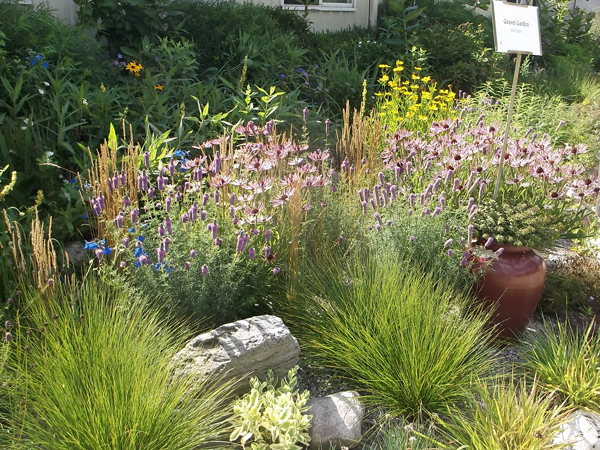
A mixture of Prairie Dropseed grass ‘Tara’, Tennessee Coneflower, Prairie Coreopsis (C. palmata), Purple Prairie Clover, and Junegrass (Koleria cristata) work well in the gravel garden.
Along the west side of the office, Brent planted a gravel garden, one of several display gardens at the nursery. The gravel garden utilizes a planting method brought over from Germany by Roy Diblik, garden designer and co-owner of Northwind Perennial Farm in southern Wisconsin. The big idea is that weeds don’t stand a chance and watering is eliminated (in most applications) because the perennials are planted in 4 to 5 inches of quartzite chips or bluestone chips.
The gravel chips are applied over standard topsoil. Perennials are planted in the gravel, not the soil. Eventually, the roots will reach the soil and the gravel will act as a mulch, retaining soil moisture, and reducing weed growth to a bare minimum.
According to Diblik, a newly planted gravel garden must be watered every other day for the first 10 weeks. This is critical, as the roots will quickly dry out, until the plants have become established in the underlying soil. The crown of the plants remain nestled in the dry gravel.
Some of the Gravel Garden Plantings:

Plains Muhly Grass (left center) grows in the gravel garden along side of Little Bluestem Grass ‘Jazz’ (center), purple leaved Penstemon ‘Pink Dawn’, and a collection of low-growing sedum in the foreground

Plains Muhly Grass (Muhlenbergia cuspidata) likes a sunny site with well drained soil. I can see this grass planted in mass, with other flowers interplanted among the tufted heads of the Muhly Grass. Maybe throw in some Midwest native Prickly Pear Cactus (Opuntia humifusa or O. macrorhiza)
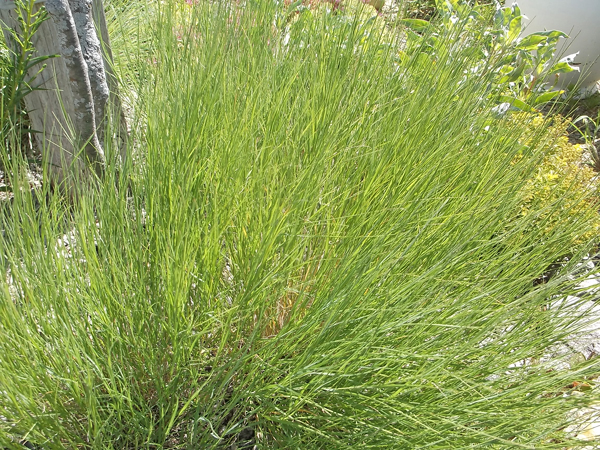
Muhly Grass would look great back lit in the morning, or late afternoon, sun.
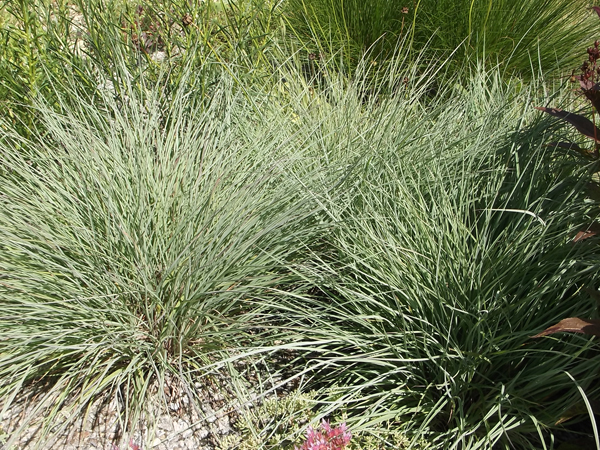
‘Jazz’ Little Bluestem (schizachyrium scoparium) has outstanding blue-gray foliage that stays upright, and turns a copper bronze color in fall. Attractive through the winter months as well.
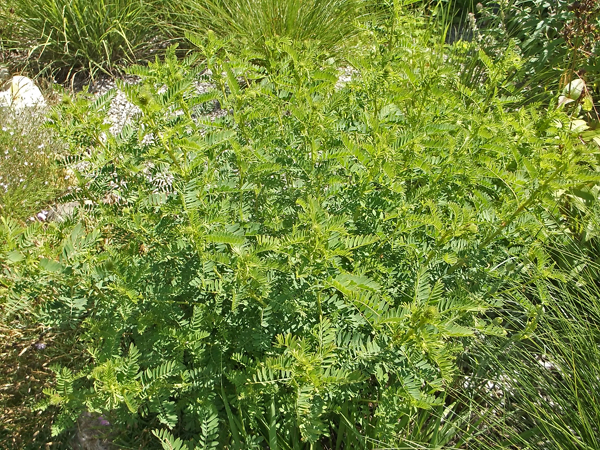
Dalea foliosa has true purple flowers (not in flower as shown) similar in form to the more pinkish flowers of the the Purple Prairie Clover (Dalea purpurea). It is also more shrub-like in form rather than PPC’s vase shaped growth.

Growing approximately 12 inches wide and 8 inches high, Sedum ‘Plum Perfection’ works well in the gravel garden as a foreground plant. The color and habit of this sedum would work well tucked around the base of some of the taller Prairie Indigos (Baptisia sp.) as it takes some shade and complements the blue-green foliage of the baptisias.
A Sampling of Grasses
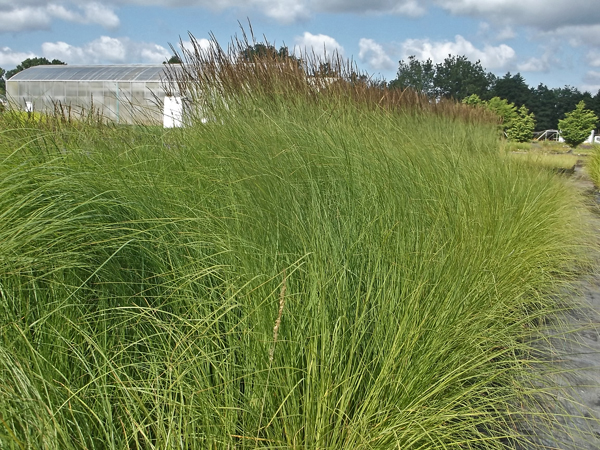
Prairie Dropseed Grass (Sporobolis heterolepis), a native low growing prairie grass. Can get 24 inches wide and 16 inches high, 24 to 30 inches high in flower. It has a well behaved tufted growth habit, does not spread by roots, very little in the way of seedling growth. Emerald green leaves in summer, straw gold fall color. The dark seed heads of Moor Grass (Molinia) are visible behind the Dropseed.
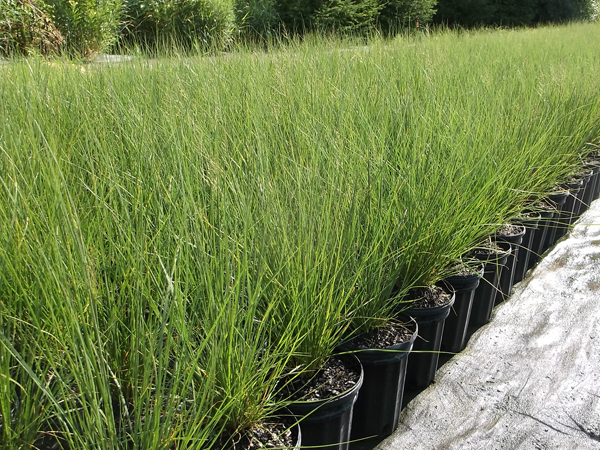
Prairie Dropseed Grass ‘Tara’ is about one third the size of the standard form of Prairie Dropseed. A natural variation found on a dry hill prairie by nurseryman, Roy Diblik.
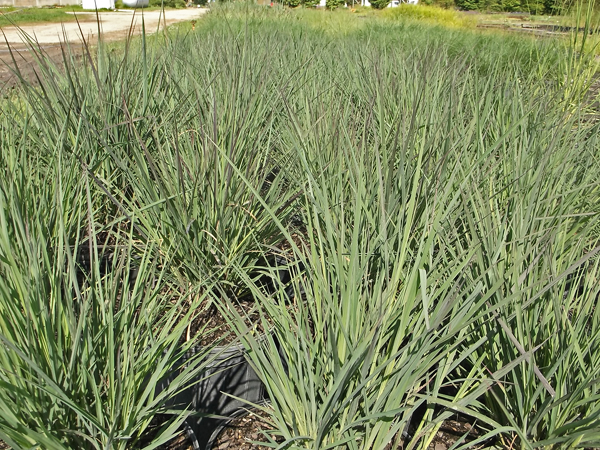
The blue-green leaves of Big Bluestem Grass ‘Red October’ is accented with purple highlights. As Fall approaches, this color becomes more prominent. In flower, it can reach heights of 6 feet. ‘Dancing Wind’ is another good Big Bluestem selection.
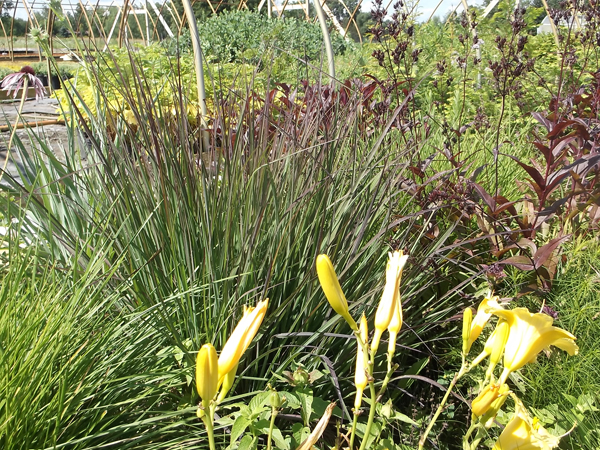
‘Red October’ Big Bluestem Grass in one of the Intrinsic display gardens
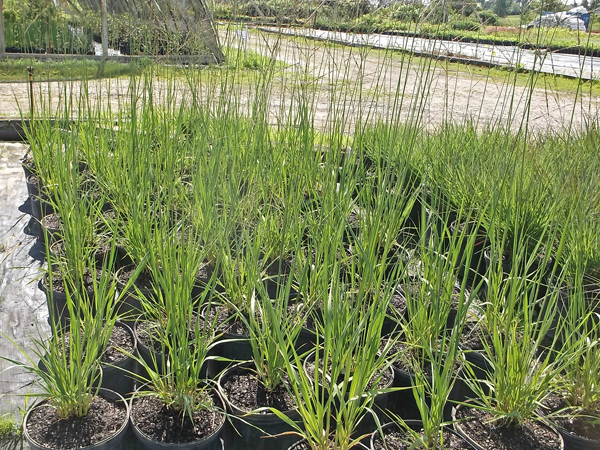
Moor Grass ‘Skyracer’ (Molinia arundinacea) in 6″ pots is deceiving, this grass can get 7 to 8 feet tall in flower. The foliage reaches heights of about 2 feet. This low foliage, and slender stems make this grass “transparent” in the landscape. Here the plants have already begun blooming in mid-July.
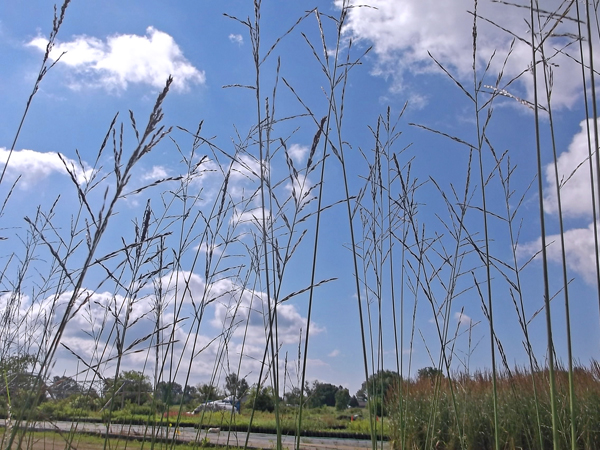
The silhouette of ‘Skyracer’ flower stems against a clear blue, summer sky.
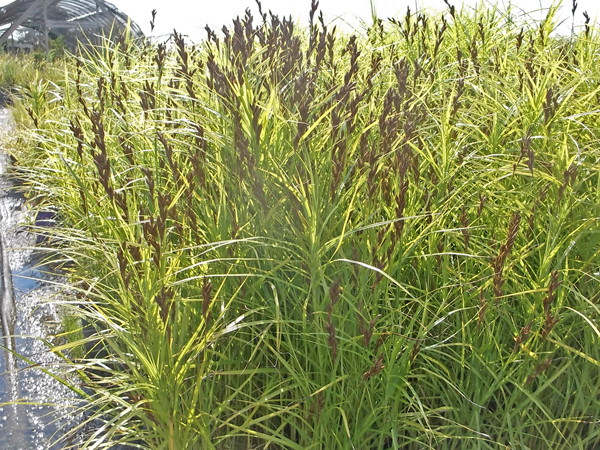
‘Ice Fountain’ Palm Sedge showing it’s contrasting dark flower stalks against a white and green variegated leaves, arching down along the stem, somewhat like a palm. Works well in a semi-shady part of the garden. Will spread more, in rich moist soil. Tolerates typical dry garden soil just fine. Grows to 24 inches in height.
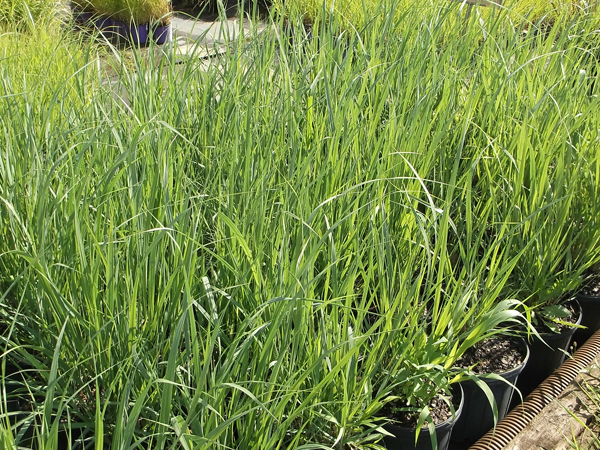
‘Northwind’ Switchgrass (Panicum virgatum) is a nice upright prairie grass with airy flowering stems in late summer, which are showy throughout winter. It’s narrow growth habit makes it perfect for planting groupings as a natural screen, or as a backdrop to shorter plantings in the garden. A Roy Diblik selection.
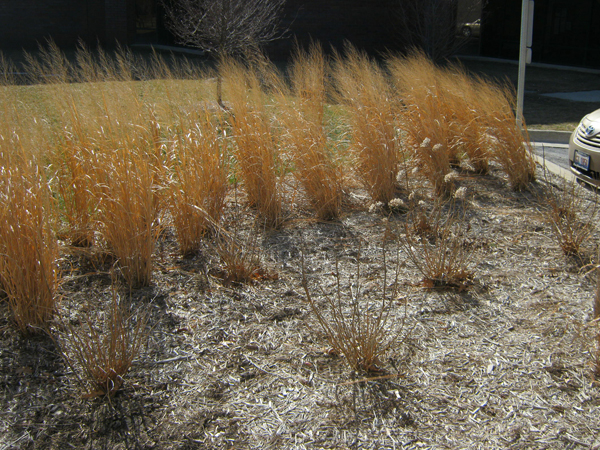
A first year planting of ‘Northwind’ Switchgrass at Governor’s State University, in University Park, Illinois, shown in spring. Still young ‘Annabelle’ hydrangea are in the foreground. I designed this planting bed as a buffer between a sitting area and adjacent parking and included plants that would have winter interest, when students are present.

A more distant shot of the same bed taken two months later, in June, showing the planting combination of Switchgrass, ‘Annabelle’ Hydrangea, Northern Sea Oats, Japanese Yew, a young Kentucky Coffeetree, and Northern Bush Honeysuckle under the shade of the Crabapple.
A Closer Look at Some of the Perennial Flowers
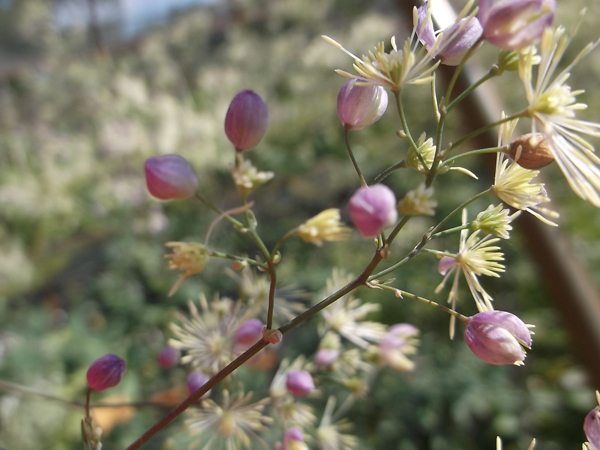
Meadow Rue ‘Elin’ (Thalictrum)was showing some real drama with it tall 4 to 5+ foot stalks of lavender colored flowers. This shade plant has attractive columbine-loike, blue-green leaves, reaching a height of approximately 2 feet. The plant would be happiest with morning sun and soil rich in organic matter.
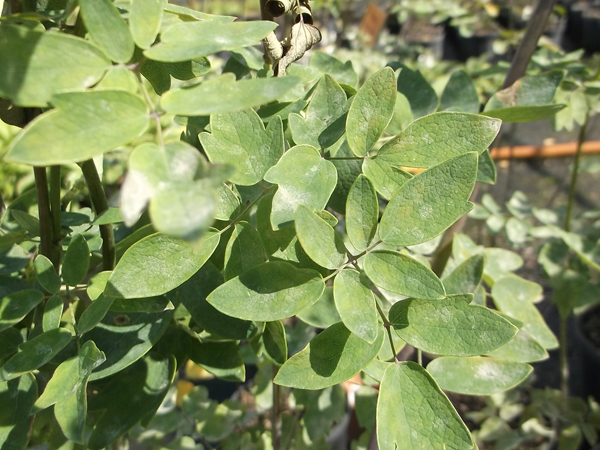
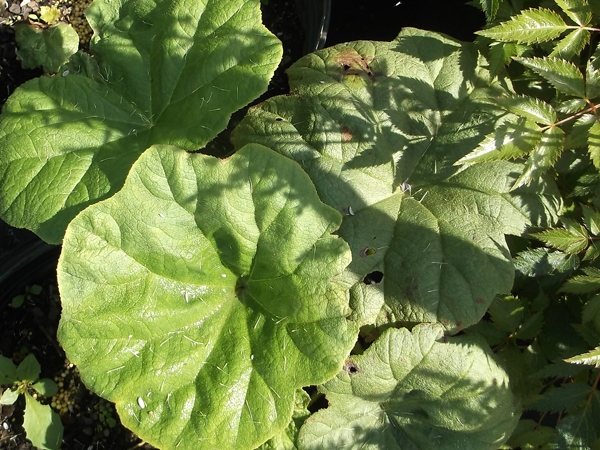
Astilboides (Astilboides tabularis) is one bold plant once it gets established in the landscape. With leaves that can approach a foot, or more, in diameter, on stalks that reach 4 feet in height, give this plant some room … and shade. The leaves can scorch if exposed to too much sun and not enough soil moisture.
Astilboiodes can take wet soil and would look great next to open water, but does well , in compost enriched garden soil.
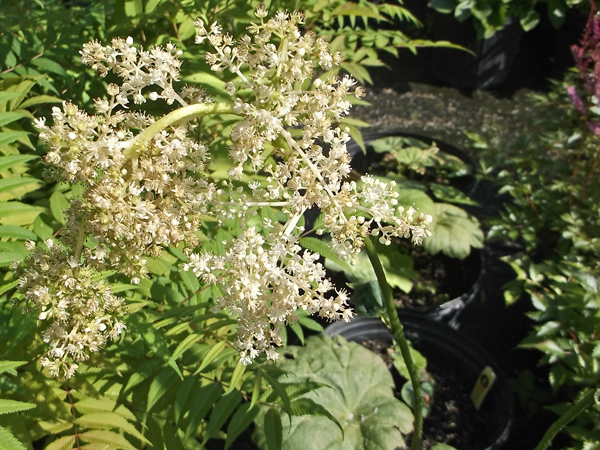
The fuzzy white flowers clusters of Astilboides look like over-sized astilbe flowers, hence it name, and appear in June, continuing through July.
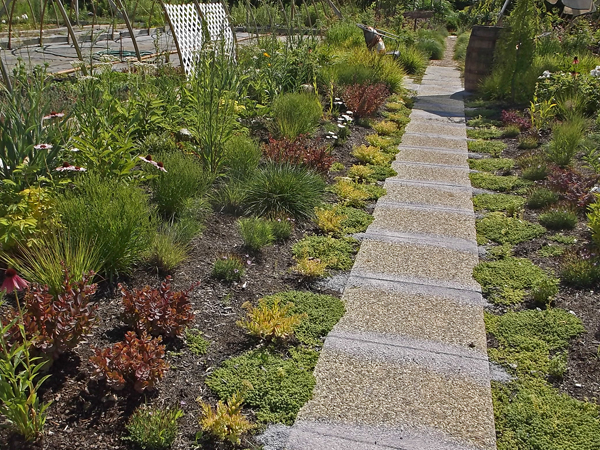
Sonja’s Garden and Trudy’s Garden are two, back-to-back display gardens designed an installed by Brent, in honor of his sister, Sonja and his mother, Trudy. The gardens, planted in the last year or two, are still immature, but consist of interesting combinations of plants – really, a unique collection of plants arranged to complement, and work well with, their neighbors
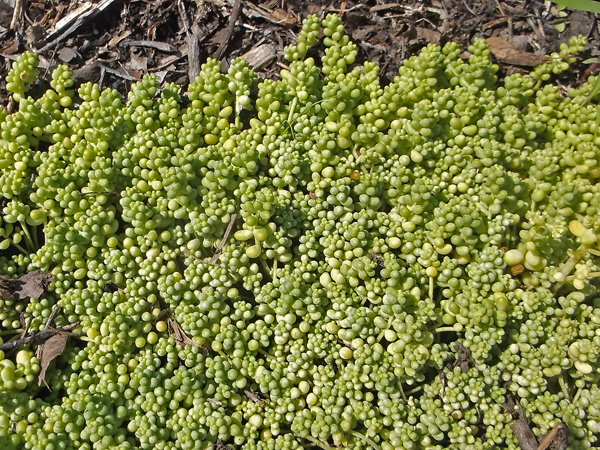
Along the pathway, two sedums are interplanted. One, a pebbly, tactile sedum called ‘Chlorotictum’ (S. album), the other, a low mounded sedum hybrid called ‘Thundercloud’, an Intrinsic Nursery introduction. ‘Chlorotictum’ hugs the ground and can be used between stepping stones in full sun. ‘Thundercloud’, somewhat similar in appearance to Sedum ‘Autumn Joy’, but shorter, will form 12 inch mounds of grey green foliage when mature, with white flowers appearing in late summer. Both like well drained soil and plenty of sun.
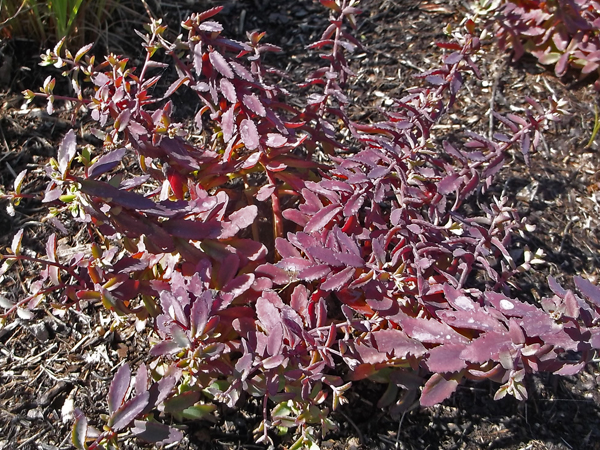
‘Plum Perfection’ Sedum is a low mounded plant, reaching 8 inches high with a 12 inch spread. The purple leaves complement many other colors in the garden, especially in fall, when grasses, amsonia, and other plants put on their fall display. This Intrinsic Nursery introduction is an improved version of Sedum ‘Bertrand Anderson.’ and can take part shade, as well as full sun. Purple color is enhanced with increased sun.
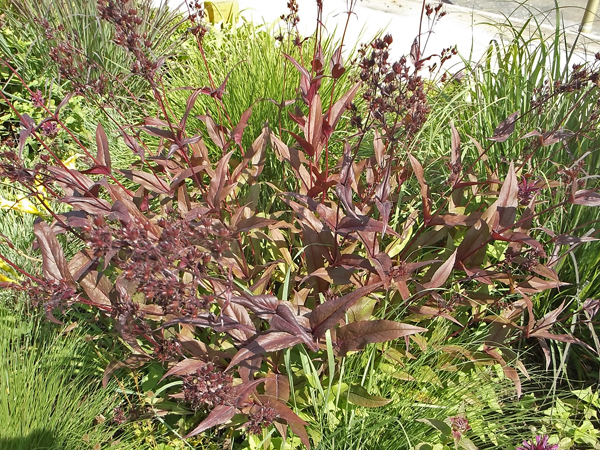
Penstemon ‘Pink Dawn’, another Intrinsic Nursery introduction, is a selection of our native Penstemon digitalis. It has deep purple foliage that stays nice even in the heat of summer. ‘Pink Dawn’ is a bit shorter at 24 inches, than ‘Husker Red’ Penstemon with deeper pink flowers in June, followed by attractive purple seed heads – effective in the winter garden. I have found that hummingbirds are attracted to its tubular flowers.
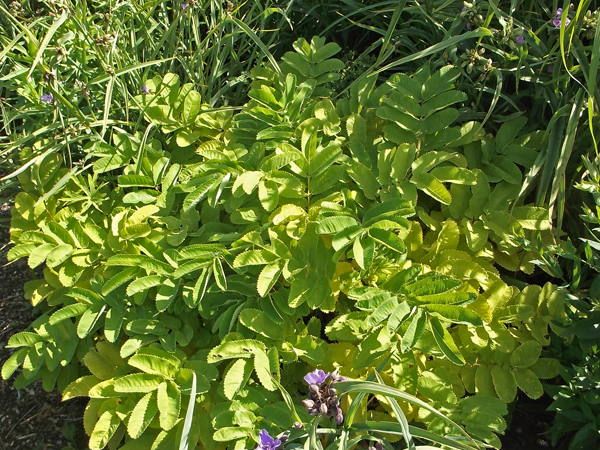
American Burnet ‘Candlelight’ (Sanguisorba canadensis) , was introduced by Brent for its bright chartreuse and gold summer leaf color an,d white, bottlebrush-like, flowers in late summer/early fall. Typically, American Burnet, a moist prairie native, can reach heights of 4 feet or more, with an equal spread, and prefer soil with available moisture present, in full sun.

‘Prairie Moon’ Rattlesnake Master’s fountain of blue-green foliage and spiky flower heads, complements the mounded fullness of ‘Daisy May’ (Daisy Duke) Shasta Daisy (Lucanthemum x superbum), both of which are Intrinsic Nursery introductions. ‘Prairie Moon’ has a shorter, thinner leaf, than the standard Rattlesnake Master, found in the prairie. ‘Daisy May’ is an improvement on the Shasta Daisy, developed by renowned plant breeder, Luther Burbank, at the turn of the last century.
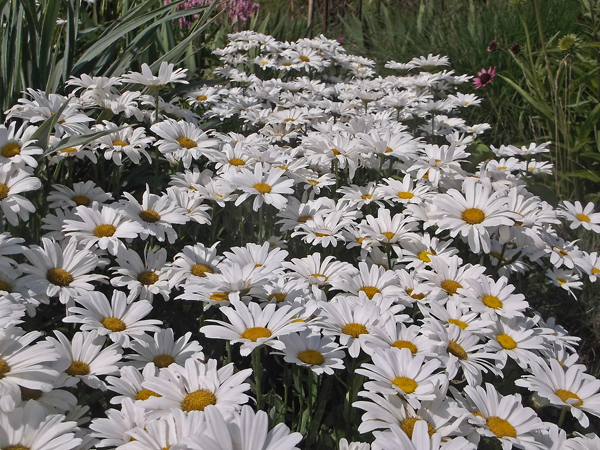
The tight mounds of deep green foliage grow to 24 inches in height, covered in 2 to 3 inch white flowers with yellow centers. The deep brown seed heads of ‘Daisy may’ add interest to the fall and winter garden. Proven Winnershas taken this plant on and making it available across the globe.
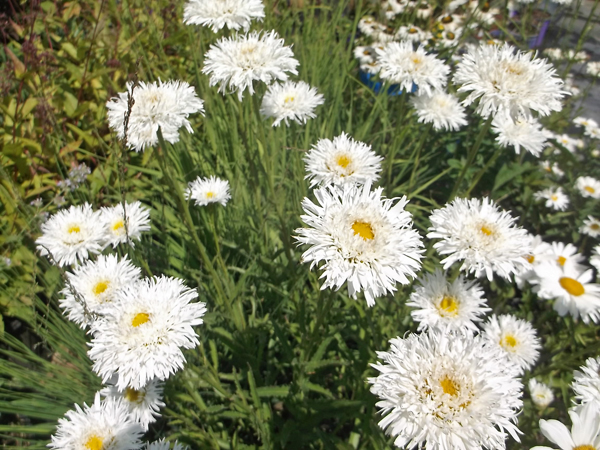
Shasta Daisy ‘Aglaia’ was another daisy seen at the nursery. Its two inch wide, double white flowers, on long stems, make a great cut flower.
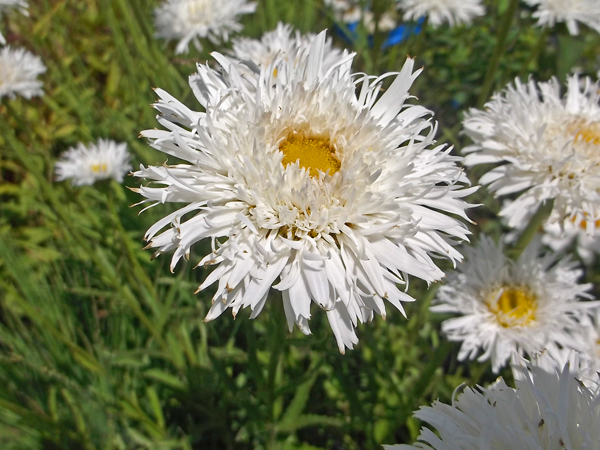
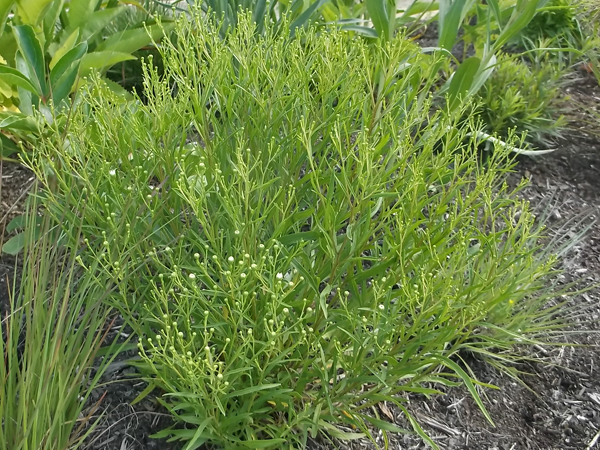
Stiff White Aster (Aster ptarmicoides) was just coming into bloom. In another week, it will be covered in half inch, daisy-like flowers. The mid-summer blooms on this native prairie aster (also called a goldenrod by some taxonomists) make it a great, drought tolerant addition to any full sun garden. Especially effective at the base of tall grasses such as Switchgrass, Indiangrass, Moor Grass, or Big Bluestem, to name a few.
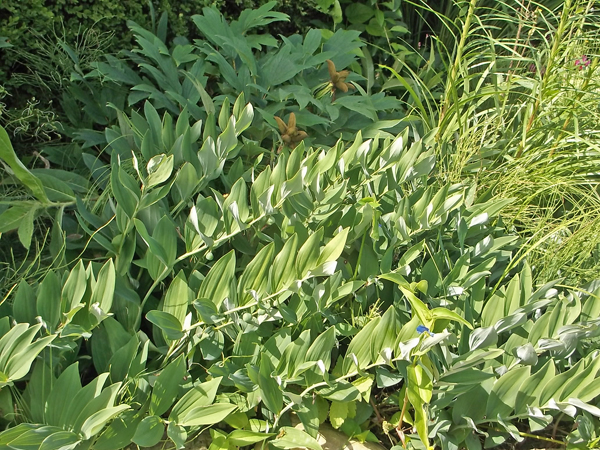
In a bit shadier garden, Brent was growing another of his selections, a dwarf version of Solomon’s Seal called ‘Prince Charming.’ While this plant can grow in full sun, as the native form does, the texture and form of this plant would be a welcome addition to the shade garden. Growing to a height of 12 inches it would make an effective ground cover planted in broad sweeping masses. Good yellow/gold fall color with pea sized purple/black fruit running along the undersides of the arching stems.
The Sedums
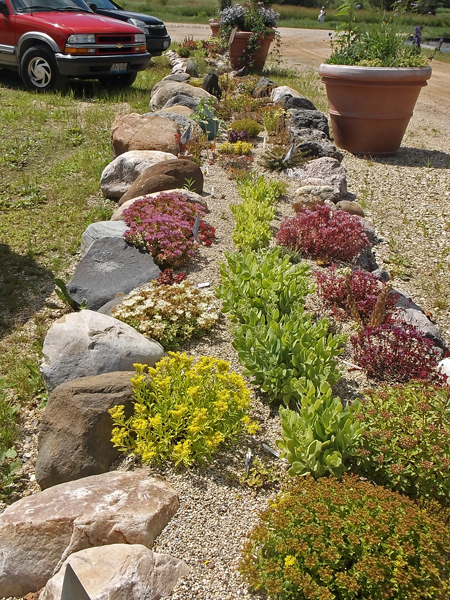
The number, and variety of forms and colors, of sedum that Brent offers at Intrinsic Perennial Gardens, Inc, is quite impressive – it was fun to think about how these drought tolerant, sun loving plants could be used. A recently planted gravel garden in the parking area is dedicated to showcasing the winter hardy sedums. Many find themselves planted on rooftops as part of a “green roof” system. This drives the massive field of sedum, seen along the road to the nursery office. In place of pure topsoil under the gravel, Brent used a sandy growing mix.
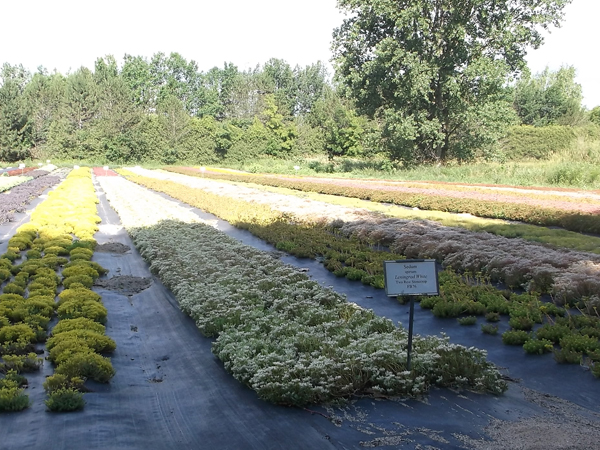
Sadly, time ran short and I was not able to look at all the sedums as closely as I would have liked. However, on my next visit, I will have Brent’s book on sedum in hand, and will focus on the great variety that he grows and their possible uses and placement in the landscape.
My thanks to Brent for taking time out of his day to show and discuss many of the plants he has introduced in the past few years, the native Midwest plants that he’s excited about and how they can be used on green roofs and in the designed landscape, as well as sharing his enthusiasm for plant selections that he is currently working on, for future introduction into the plant trade. And while his wholesale nursery is not open to the general public, I hope that this behind the scenes tour will be an inspiration when you are thinking about what new plants to introduce in to your planting schemes.




































































































